
 |
|
|
|
|
|
Nasa's Stereo MissionOn October 26, 2006, NASA launched a pair of spacecraft to observe the Sun in stereo. On December 15, 2006, the pair of spacecraft swung by the Moon for gravity assists. Stereo A was ejected into solar orbit. Stereo B remained in Earth orbit to receive another gravity boost from the Moon on January 21, 2007.
The simulation stereo1 (Windows app simulation: stereo10272006.gsim) shows a trio of spacecraft: Stereo A, Stereo B, and their booster rocket, in Earth orbit following launch. If you run this simulation, you'll notice that all three spacecraft crash to Earth at perigee. While this was the fate of the booster rocket, Stereo A and Stereo B performed burns while near apogee, raising their perigees above Earth's surface. 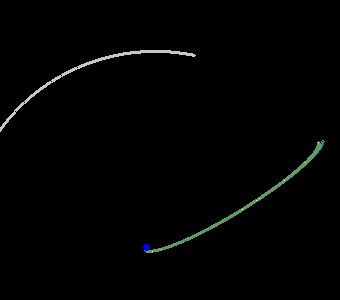
The simulation stereo2 (Windows app simulation: stereo11022006.gsim) shows these twin spacecraft as they continue to orbit the Earth in highly eccentric orbits that carry them from just above Earth's surface to slightly beyond the orbit of the Moon. 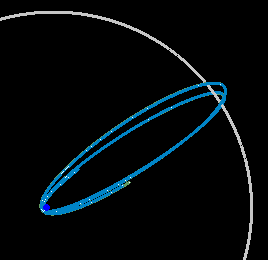
The simulation stereo3 (Windows app simulation: stereo12152006.gsim) shows the spacecrafts swing by the Moon for gravity assists on December 15, 2006. Watch as Stereo A is ejected from the Earth / Moon system, while Stereo B is boosted into a wider orbit around the Earth. 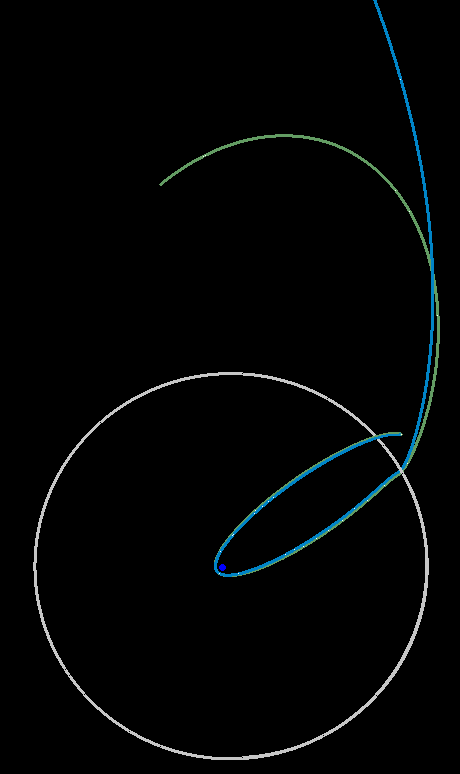
On January 21, 2007, Stereo B returned to the Moon for another gravity boost that ejected it from the Earth / Moon system. The simulation stereo35 (Windows app simulation: stereo01212007.gsim) shows Stereo B just prior to the gravity boost. Watch as it is ejected into solar orbit. 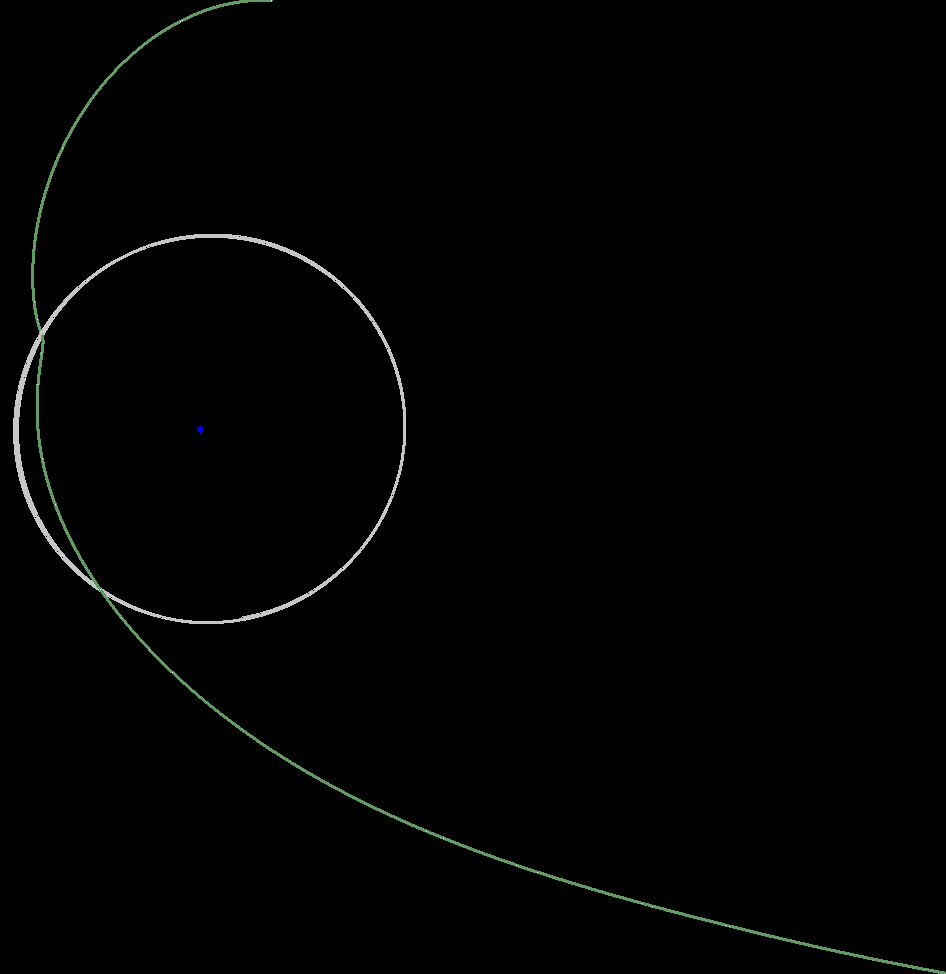
Switch the Focus Object to the Sun and zoom out to watch the twin spacecraft in their solar orbits. 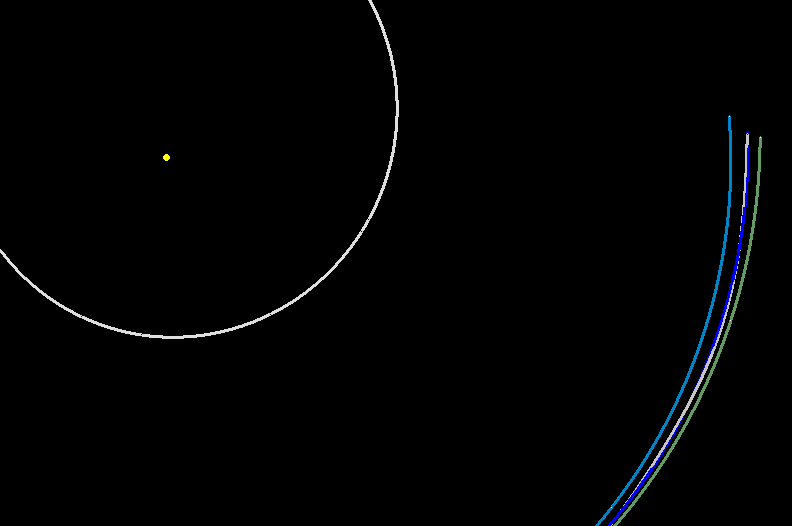
The simulation stereo4 (Windows app simulation: stereoRF.gsim) shows the spacecraft in a rotating frame with its period set to Earth's orbital period. Year after year the spacecraft become more distant. 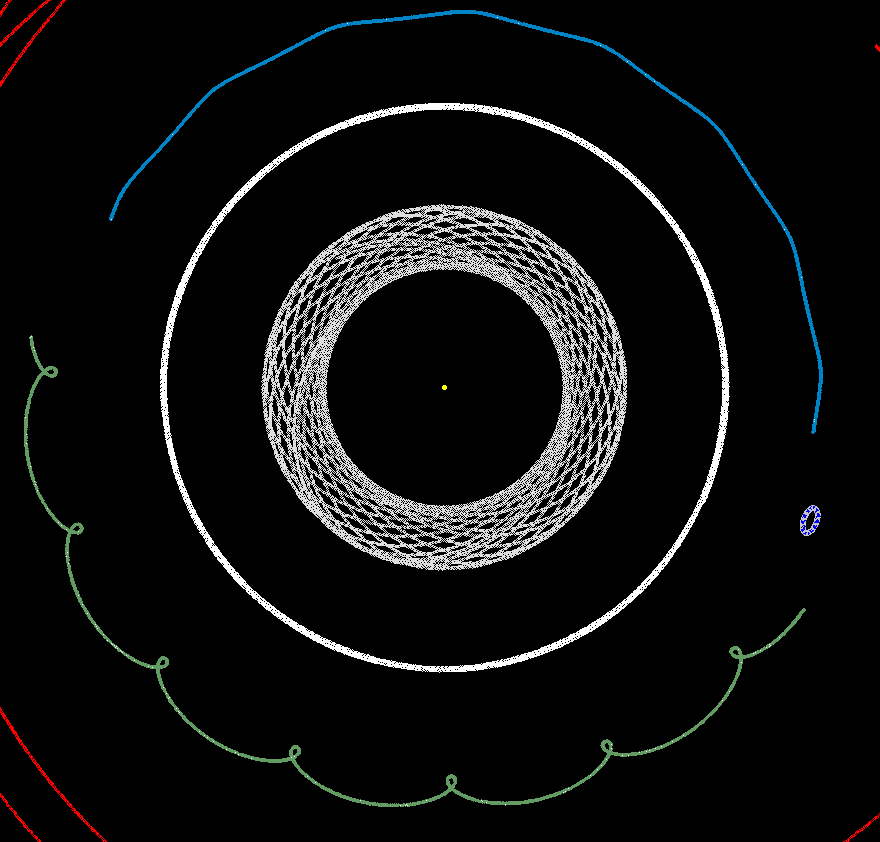
The simulation stereo5 gives a stereo view of the Sun with each spacecraft contributing an image. 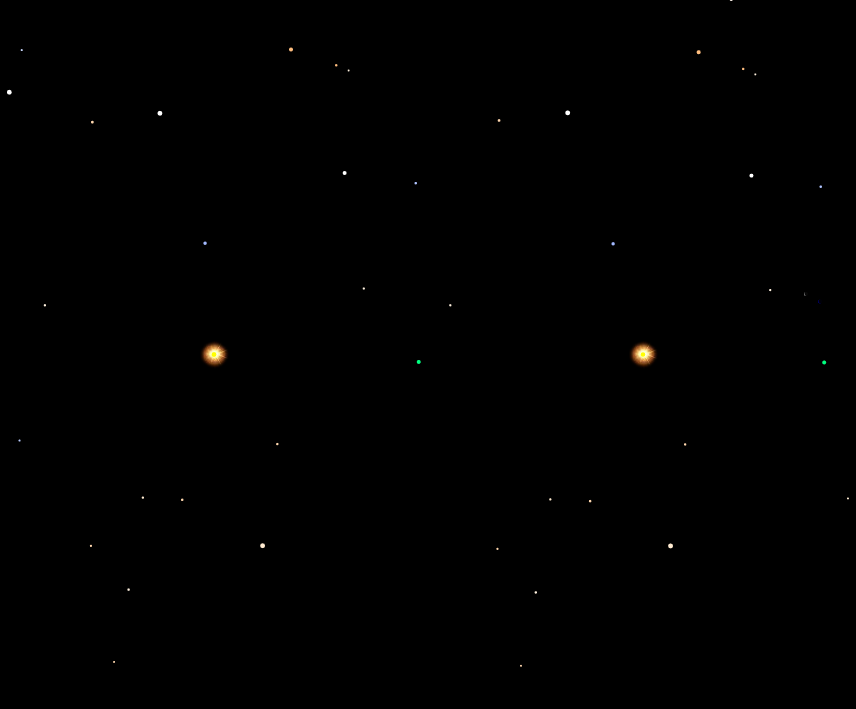
Discuss this simulation on Gravity Simulator's web forum |
|